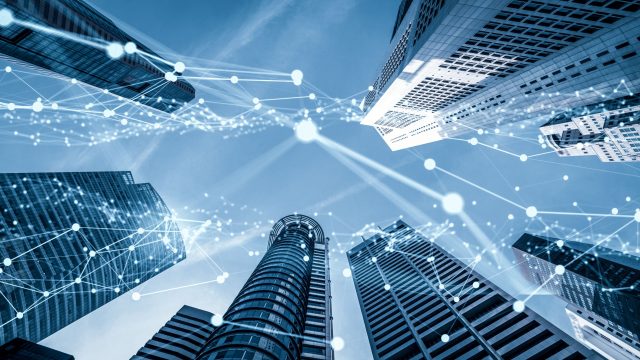Physical security has evolved dramatically in recent years, most notably since the start of the COVID-19 pandemic when technology had to surge forward to meet the demands of a new environment. In order to effectively adapt to these changing technologies, open interfaces for interoperability have become key approaches for smart buildings for data sharing and integrations between different systems. In a recent webinar, ONVIF Chairman Leo Levit joined Memoori to discuss this open approach and how ONVIF Profile M enables the sharing of metadata in a multi-vendor building environment.
Read on for more on how relevant technologies are converging within the physical security and smart building space in this guest blog from James McHale, CEO, Memoori Research.
Blurring the Lines Between Physical Security & Smart Building Technology
The physical security industry has changed extensively in the past 20-years as buildings got smarter and the threat landscape developed. Over those two decades we have seen the dominance of large conglomerates erode, innovative startups grow, and the rise of China as the undoubted world leader in key physical security segments. Then, over the past two years, as the COVID-19 pandemic challenged all industries, we have seen physical security thrive in many aspects of this new environment, driven by virus mitigation and the convergence of physical security with the internet of things (IoT) in smart buildings.
The borders that define the physical security business have begun to erode, with innovations and increased demand for integration between different building technologies becoming necessary to deliver products and systems that customers now expect. The transition in the physical security market also combined with wider smart buildings trends, such as the IoT, particularly for those security products and services that are embedded into other building systems, known collectively as the “Building Internet of Things” or BIoT.
“The security industry is having to connect with a wider sphere of functionalities, not just security, and to develop tailored vertical markets offerings in order to deliver, together with their strategic partners, IoT solutions that work on standard open platforms,” Memoori explains. “If the physical security industry does not meet this challenge, then an identity crisis will drastically reduce its prospects for future growth. This does not mean that product manufacturers have to install systems, but they will need to develop new partnerships, and interfaces with those responsible for delivering more comprehensive BIoT solutions with control and reporting functionality for multiple building systems. This shift will change the routes to market for a significant proportion of the physical security business.”
In recent years, the COVID-19 pandemic has created a significant change to the distribution of demand for security products by vertical, some of which will be largely short-term in nature. Lockdowns, their resultant economic impacts and public concerns related to virus transmission have adversely affected sales in several markets including retail, leisure, hotel verticals, and to a lesser extent offices. Conversely, investment in healthcare and logistics-related sectors has risen sharply to balance out demand, and as the adversely affected commercial buildings slowly return to action, we see increasing demand for those security products and services that support virus mitigation efforts.
“The global threat of COVID-19 epidemic has not yet been eliminated, and there are uncertainties in economic development. The pandemic remains a threat to economic and health outcomes in various territories across the globe, but we now have a much clearer picture of its overall effect on the physical security market,” Memoori explains. “The pandemic is helping to reshape the Physical Security industry, turbo-charging certain emerging business models, and the technologies involved continue to play a prominent role in coping with the pandemic by making buildings safer and more resistant to COVID-19.”
Read more on how security is contributing to Building IoT in this report from Memoori that examines the security market’s growth and contributions to Building IoT.
Interested in participating in the next ONVIF blog? Contact us here.






